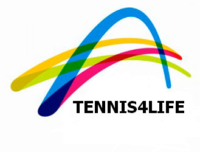Playing tennis can increase life expectancy by 10 years
Playing tennis could increase life expectancy by a decade, according to an ongoing cardiovascular study.
The Copenhagen City Heart Study has examined people over a 25-year period and evaluated improvements in life expectancy through participation in various sports and leisure-time activities.
In total, 8577 participants were examined for all-cause mortality between 10 October 1991 and 16 September 1994 until 22 March 2017, with various sports found to improve and increase life expectancy.
Of the sports included in the observational study, tennis topped the charts for potential life expectancy gains by some considerable distance, with results suggesting as many as 9.7 years could be added to an individual’s existence.
This is 3.5 years more than its nearest competitor badminton, the playing of which has been found to increase life expectancy by 6.2 years, with football having the potential to add 4.7 years and cycling 3.7 years.
Swimming was found to boost life expectancy rates by 3.4 years, jogging by 3.2 years, calisthenics by 3.1 years and health club activities by 1.5 years.
A further conclusion of the study suggests that leisure-time sports which involve greater levels of social interaction are associated with the higher levels of longevity. The study intends to investigate this finding further.




